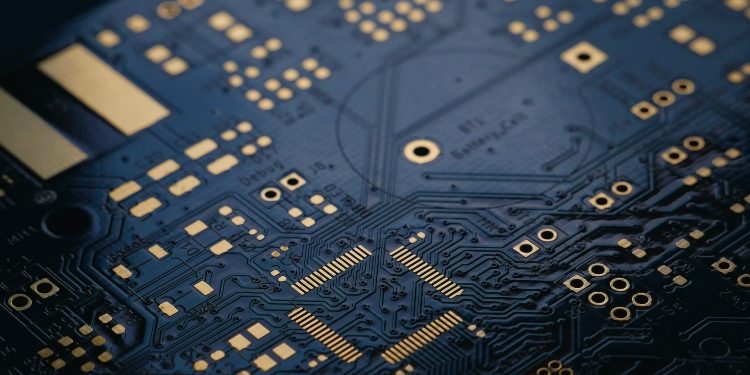Microcontrollers have become an integral part of our present-day global, playing a critical position in infinite gadgets and packages that make our lives less complicated and greener. Microcontrollers are the unsung heroes operating backstage, from household home equipment to clinical devices, automobile systems, and business equipment. This complete manual will delve into the complicated world of Microcontrollers, unraveling their secrets, packages, and how they form the era landscape.
Introduction to Microcontrollers
QUARKTWIN Microcontrollers are compact integrated circuits that perform specific tasks within electronic systems. These miniature computers combine processing power, memory, input/output interfaces, and sometimes additional specialized features. They’ve developed extensively because of their inception, transitioning from simple controllers to sophisticated devices that energy our current global. Their importance can not be overstated, as they shape the spine of several technological advancements.
Components and Architecture
A typical microcontroller consists of center additives just like the Central Processing Unit (CPU), Random get admission to reminiscence (RAM), and read-only reminiscence (ROM). The CPU serves because the microcontroller’s mind executes instructions, while RAM offers brief records garage. ROM carries the firmware or pre-programmed instructions necessary for the microcontroller’s operation. In addition, Microcontrollers are ready with input/output ports and diverse peripherals that allow them to communicate with the outside world.
How Microcontrollers Work
Microcontrollers function via a chain of steps called the Fetch-Decode-Execute cycle. The CPU fetches coaching from reminiscence, decodes it to recognize the assignment, and executes it. The microcontroller’s clock speed determines the rate at which this cycle happens. Efficient memory management ensures that data and instructions are stored and retrieved accurately.
Programming Microcontrollers
Programming Microcontrollers involves writing code in languages like C or assembly. This code is then compiled into machine-readable instructions that the microcontroller can understand. The compiled code is uploaded to the microcontroller’s reminiscence, permitting it to perform its distinctive tasks. This programming flexibility is a vital cause for the tremendous use of Microcontrollers in numerous packages.
Applications in Everyday Life
Microcontrollers have discovered their way into our regular gadgets, enhancing functionality and personal experience. In smartphones and drugs, they manage touchscreens, sensors, and strength management. Home automation structures use Microcontrollers to control lights, security, and energy usage. Microcontrollers oversee engine performance, safety features, and entertainment systems in the automotive industry.
Industrial and Medical Applications
The industrial sector relies heavily on Microcontrollers for automation and process control. These devices monitor and regulate machinery, optimizing production processes. Microcontrollers power medical devices like pacemakers, insulin pumps, and diagnostic equipment in the medical field, contributing to accurate and timely patient care. Reliability and safety are paramount in both these sectors.
Choosing the Right Microcontroller
Selecting the appropriate microcontroller for a project requires careful consideration of factors such as processing power, memory requirements, power efficiency, and compatibility with development tools. Engineers must balance performance and energy consumption while ensuring seamless integration with the system.
Challenges and Future Trends
As technology advances, Microcontrollers face demanding power intake and protection situations. Ensuring overall energy performance is essential with the proliferation of net of factors (IoT) gadgets. Furthermore, the interconnected nature of devices increases worries about facts protection and privacy. Future trends in microcontroller design include increased integration, improved power management, and enhanced security features.
Conclusion
QUARKTWIN Microcontrollers are the unsung heroes driving innovation across various industries. From smartphones, we rely directly on the scientific gadgets that save lives, and their effect is simple. As technology evolves, Microcontrollers will play a pivotal role in shaping the future panorama, making our lives extra convenient, green, and interconnected.
FAQs
- What is a microcontroller? A microcontroller is a compact integrated circuit that performs specific tasks within electronic systems.
- How do Microcontrollers work? Microcontrollers operate through a Fetch-Decode-Execute cycle, executing instructions fetched from memory.
- Where are Microcontrollers used? Microcontrollers are used in smartphones, domestic automation, automotive systems, medical devices, and others.
- How do you program a microcontroller? Microcontrollers are programmed using languages like C or assembly, with the code compiled and uploaded to the device.
What are the challenges in microcontroller design? Challenges include optimizing power consumption and addressing security concerns in connected devices.
David Prior
David Prior is the editor of Today News, responsible for the overall editorial strategy. He is an NCTJ-qualified journalist with over 20 years’ experience, and is also editor of the award-winning hyperlocal news title Altrincham Today. His LinkedIn profile is here.













































































